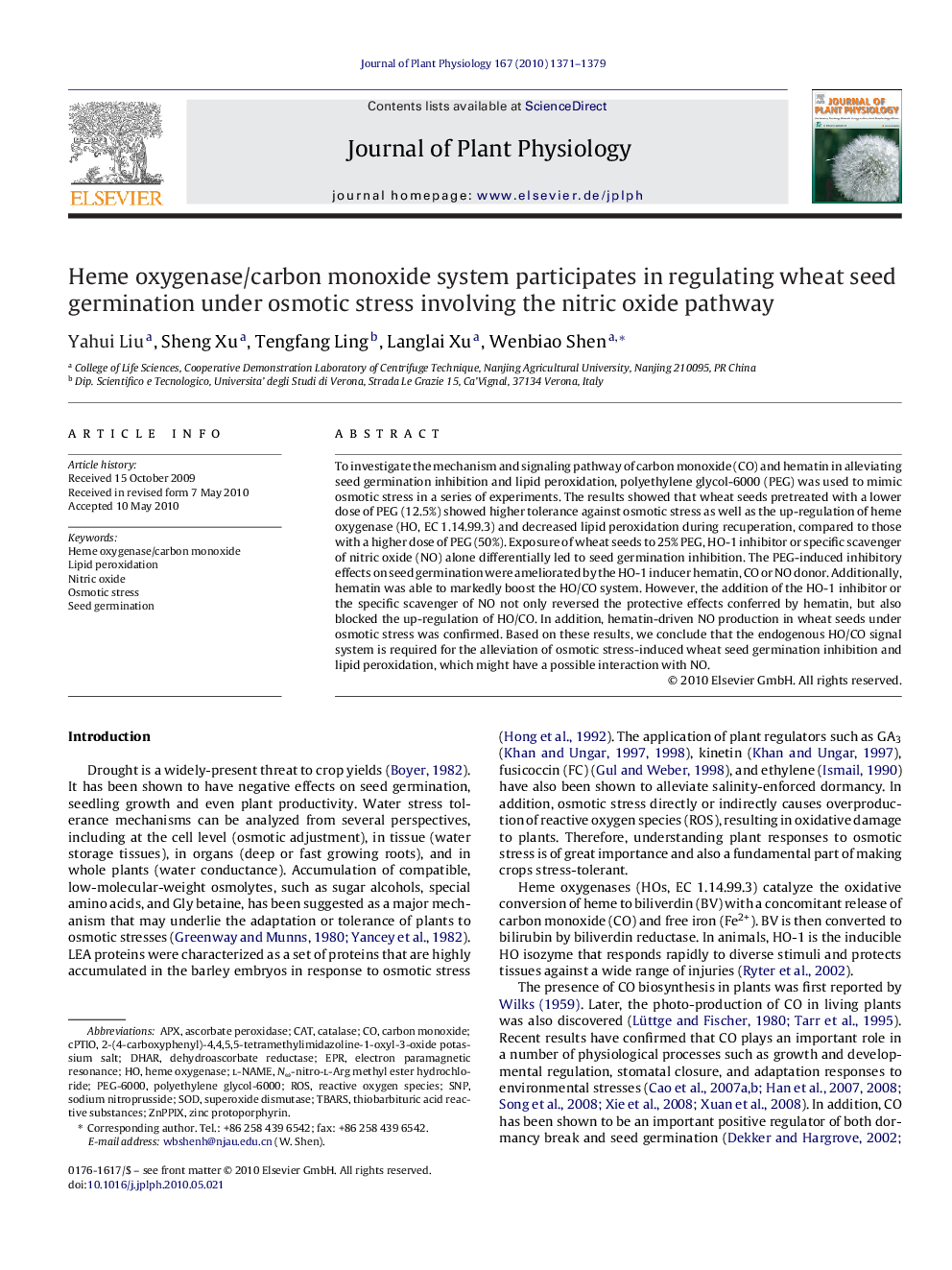| Article ID | Journal | Published Year | Pages | File Type |
|---|---|---|---|---|
| 2057833 | Journal of Plant Physiology | 2010 | 9 Pages |
To investigate the mechanism and signaling pathway of carbon monoxide (CO) and hematin in alleviating seed germination inhibition and lipid peroxidation, polyethylene glycol-6000 (PEG) was used to mimic osmotic stress in a series of experiments. The results showed that wheat seeds pretreated with a lower dose of PEG (12.5%) showed higher tolerance against osmotic stress as well as the up-regulation of heme oxygenase (HO, EC 1.14.99.3) and decreased lipid peroxidation during recuperation, compared to those with a higher dose of PEG (50%). Exposure of wheat seeds to 25% PEG, HO-1 inhibitor or specific scavenger of nitric oxide (NO) alone differentially led to seed germination inhibition. The PEG-induced inhibitory effects on seed germination were ameliorated by the HO-1 inducer hematin, CO or NO donor. Additionally, hematin was able to markedly boost the HO/CO system. However, the addition of the HO-1 inhibitor or the specific scavenger of NO not only reversed the protective effects conferred by hematin, but also blocked the up-regulation of HO/CO. In addition, hematin-driven NO production in wheat seeds under osmotic stress was confirmed. Based on these results, we conclude that the endogenous HO/CO signal system is required for the alleviation of osmotic stress-induced wheat seed germination inhibition and lipid peroxidation, which might have a possible interaction with NO.
